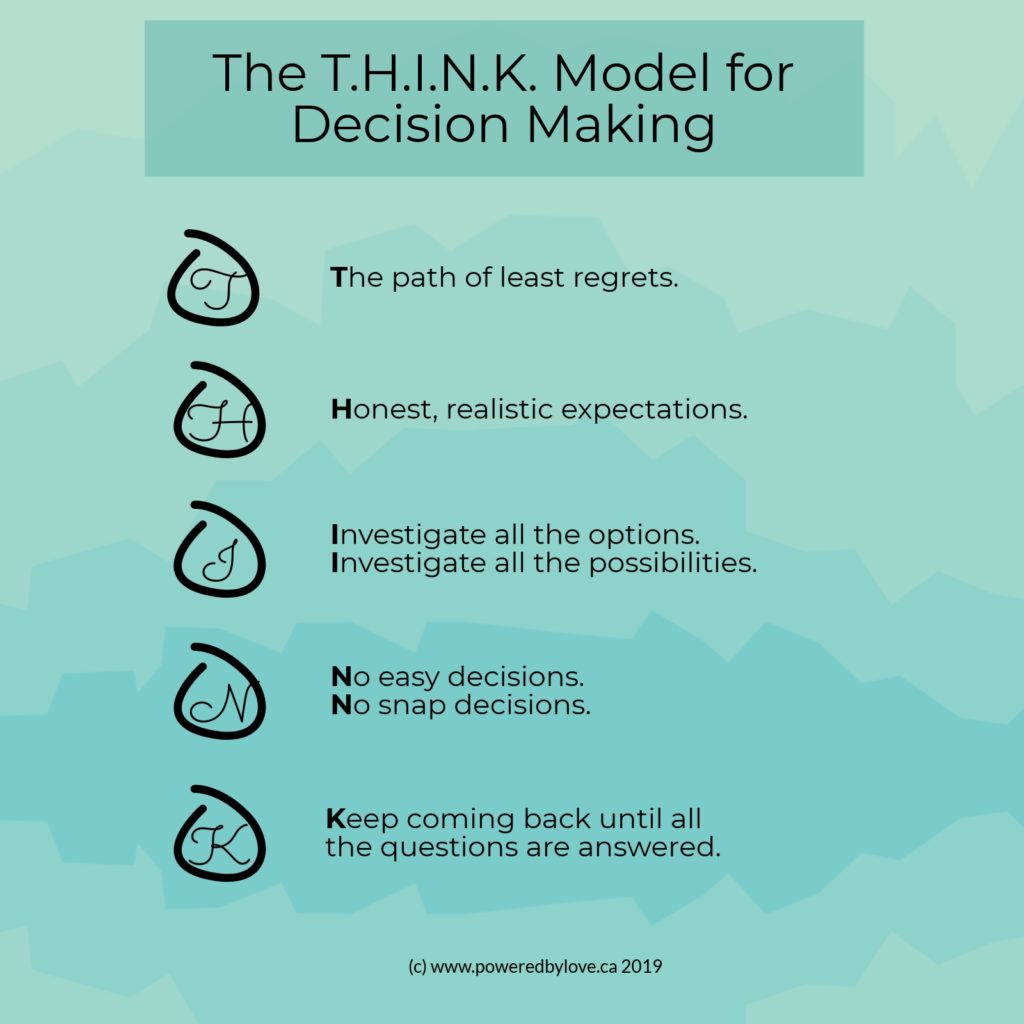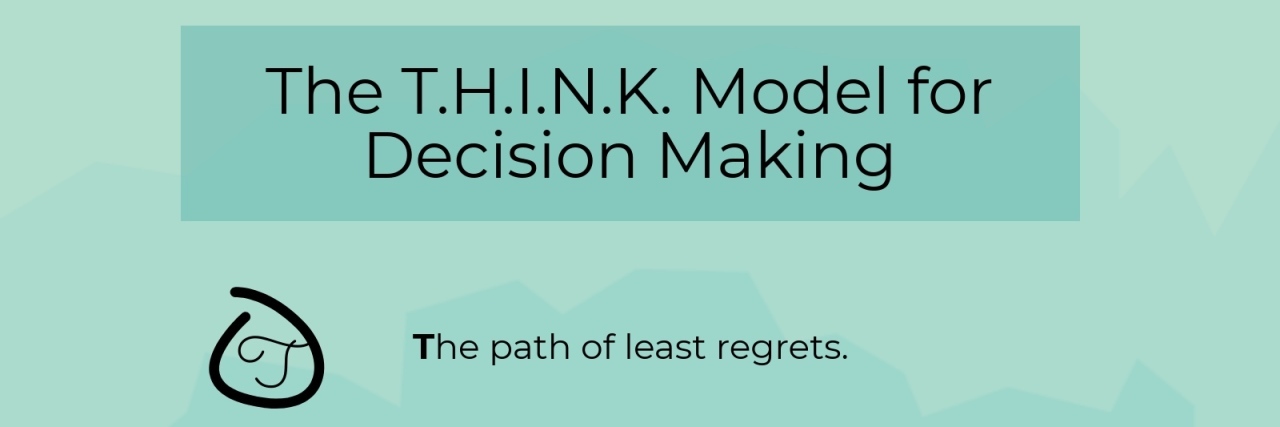The T.H.I.N.K. Method I Developed to Make Difficult Medical Decisions Easier
Sometimes knowing which decisions to make as a disabled or chronically ill individual is straightforward, but sometimes it can seem impossible.
The first time I faced that was when three rounds of club foot surgeries had failed to work. I was 13 years old and faced with whether or not to have an Ilizarov fixator placed. The second time I faced the seemingly impossible I had just been told that my unborn son had trisomy 18 and we needed to make plans for how to proceed with the pregnancy, birth and (if we had the opportunity) whatever hours, days or weeks we might get with him. And now with an undiagnosed disability for myself and my 18-year-old, it feels like I face seemingly impossible decisions every day!
I might have come to the conclusion that I’m just not any good at decision-making, but I have also spent years working in peer support – helping other parents and individuals with disabilities navigate some of the most impossible decisions life can throw at us – and I realize that I am definitely not the only one struggling when things get unpredictable or when we run out of medical best practices. So I developed the T.H.I.N.K. method to help me explain the tools I use to get through the hardest of situations.

T: The path of least regrets. It’s a phrase a fellow parent taught me early on in our trisomy 18 adventure. She said, “You can’t have the outcome that you wanted (a healthy baby), but you can make choices that will lead to the path of least regrets.” That first piece of advice has made an enormous difference through the years.
H: Honest, realistic expectations. It can be super challenging to get honest about the realities of the medical conditions we live with – especially when we are dealing with undiagnosed conditions where the future is a murky haze at best. But to the extent that we can reach for honesty about where we are today and what the range of expectations is that is possible for tomorrow, it will significantly help us to make the best decisions possible.
I: Investigate all the options. Investigate all the possibilities. Just because there is a standard way for things to be done doesn’t mean that it’s the only way for them to get done, or that it’s the right way for them to be done in this circumstance. The more we can ask questions about the range of possibilities, the better chance we will have of coming up with the best option for this situation right now.
N: No easy decisions. No snap decisions. Sometimes there is a difference between the easy decision and the right decision – and while the easy decision might be easy in the short-term, we can live with a lot of regrets down the road for not choosing the right one. Similarly, the strain and stress of uncertainty can leave us yearning to simply make a decision – any decision – to quell the panic that rises inside of us. But making snap decisions is another way to end up with a lot of regrets in the end. Far better to take a few extra minutes or hours or days to make the right decisions for the long run.
K: Keep coming back until all the questions are answered. The rush of many health care appointments can leave us feeling like we have to limit ourselves to one or two questions, which can make it difficult to get the answers we need to make the decisions that are best. I always bring a list of questions to appointments and try to write down the answers I receive as we go. If I have a lot of questions, sometimes I’ll ask for a longer appointment when I’m booking, or sometimes it’s possible to ask some questions of the nurse or resident and then leave the hardest questions for the doctor or specialist. Either way, having the full complement of answers takes me a long way forward to making the right decision.
Although not perfect, the T.H.I.N.K. method gives me more agency and autonomy in my health care process and helps me find the path of least regrets more frequently. Perhaps it could help you, too?
Image via contributor

